Discover the Top 10 most popular foods in South America! From Argentina’s flavorful Asado to Peru’s fresh Ceviche, South American cuisine is a vibrant mix of indigenous traditions, colonial influences and bold spices. With rich culinary diversity, the continent offers everything from smoky grilled meats to tangy seafood, reflecting its dynamic landscapes and cultures.
In this guide, we’ll explore the top 10 must-try foods that capture the essence of South American cooking. Whether you’re a foodie or just curious, these flavors will excite your taste buds and showcase the continent’s rich culinary heritage.
Top 10 most Popular foods in South America
South America’s most popular foods offer a flavorful journey through its vibrant and diverse cuisines, deeply rooted in cultural heritage and the continent’s natural bounty. From the hearty stews of the Andes to the fresh ceviches of the Amazon, each region showcases unique ingredients and time-honored cooking traditions.
Here are Top 10 most Popular foods:
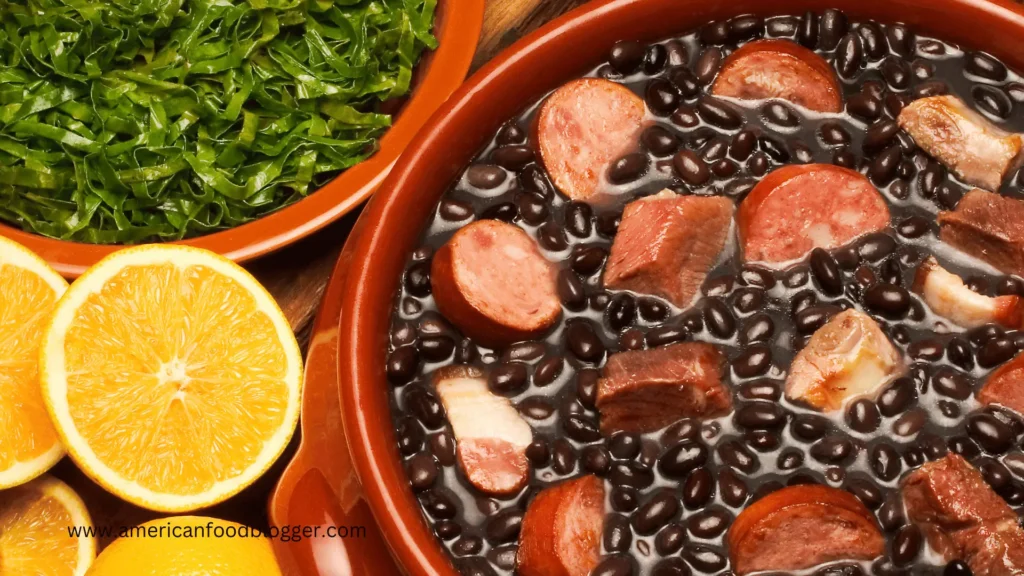
1. Feijoada
Feijoada is Brazil’s beloved national dish, a hearty stew made from black beans and a variety of smoked meats, primarily pork—such as sausages, rib and sometimes beef. It’s slow-cooked over several hours, allowing the flavors to meld into a rich, comforting meal.
This dish originated from Portuguese settlers and was later adapted by African slaves in Brazil in the early 1800s. Traditionally, it’s served with rice, collard greens, orange slices and farofa (toasted cassava flour). Feijoada is especially enjoyed during family gatherings and special occasions.
Watch: How to make Feijoada
Why Popular?
1. Cultural Fusion: Feijoada is a delicious blend of Portuguese and African culinary influences, enriched with local South American ingredients. It’s a perfect representation of South America’s diverse food history.
2. Rich Flavor Profile: This hearty dish features black beans slow-cooked with salted and smoked meats, offering a savory, comforting flavor that is loved across the region.
3. Traditional and Social Dish: Feijoada is more than food—it’s a tradition. Typically enjoyed on Wednesdays and Saturdays. It brings people together for shared meals and joyful gatherings.
4. National Pride: In Brazil, feijoada is considered a national dish and is a point of pride. It symbolizes Brazilian identity and is celebrated as part of the country’s rich culinary heritage.
5. Comfort Food Appeal: With its hearty ingredients and bold flavors, feijoada is perfect for both casual dinners and festive celebrations.
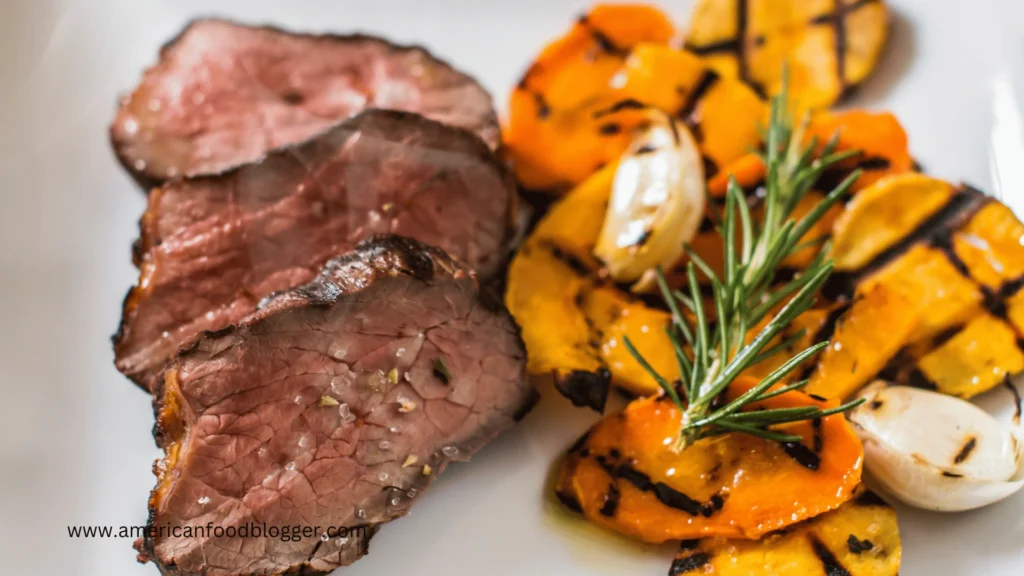
2. Asado
Asado is Argentina’s grilling tradition, featuring a variety of meats—beef, sausages, ribs, chicken and lamb—slow-cooked over an open flame. It’s a social event where family and friends gather to enjoy smoky meats with chimichurri, salads and bread.
Watch: How to make Asado
Why Popular?
1. Cultural Significance: Asado is more than a meal—it’s a South American tradition that brings people together, especially in Argentina. It reflects the region’s love for social gatherings and shared experiences.
2. Authentic Preparation: Asado uses a unique cooking method where meat is grilled over an open flame or wood fire, often on a parrilla (grill) or a cross-shaped rack.
3. Regional Variations: Countries like Argentina, Uruguay and Brazil add their own twists to Asado with local spices, cooking styles and sides, making it a versatile tradition across South America.
4. Festive Atmosphere: Asado is a highlight of family gatherings, holidays and celebrations, creating a warm and festive vibe while the meal is prepared and enjoyed.
5. Traditional Accompaniments: It’s served with classic sides like chimichurri, salads and bread, which enhance the smoky flavors of the grilled meats.
6. Social Bonding: Asado is cherished for its rich traditions, delicious flavors and its role in connecting people across South America.
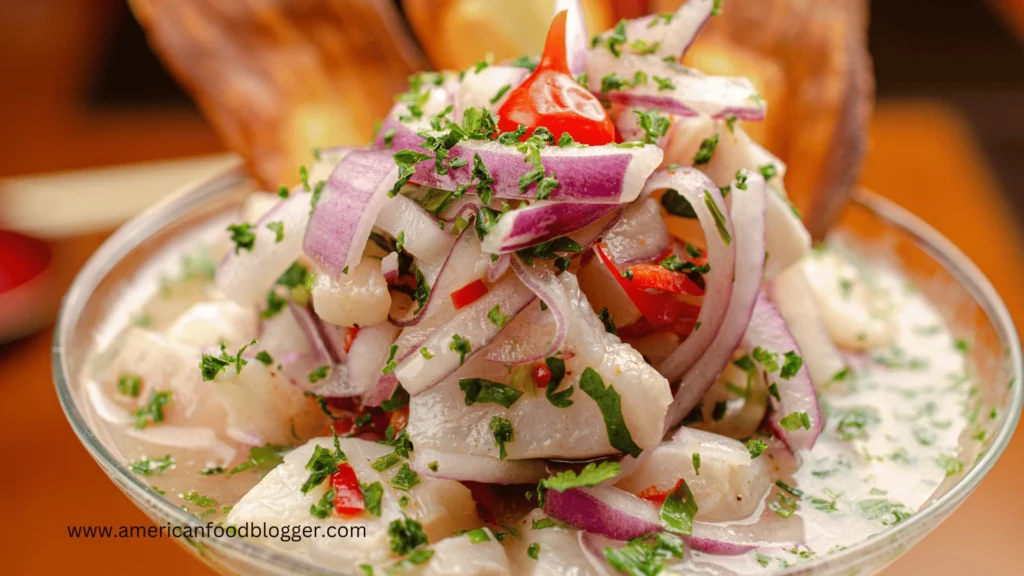
3. Ceviche
Ceviche is a fresh and flavorful Peruvian dish made with raw fish or seafood marinated in lime or lemon juice, which naturally “cooks” the fish. Combined with chopped onions, cilantro and chili peppers, Ceviche offers a tangy, zesty taste with a hint of heat. It’s often served with sweet potato, corn or crispy plantain chips and is a favorite at parties and gatherings.
Watch: How to make Ceviche
Why Popular?
1. Fresh and Flavorful: Ceviche is loved for its zesty, refreshing flavors. Made with raw fish marinated in citrus juice, it’s tangy, refreshing and ideal for warm weather.
2. Cultural Significance: Ceviche is a staple in South America, especially in Peru, where it’s a national dish and a symbol of the country’s vibrant culinary heritage.
3. Historical Roots:The dish originated in coastal South America, where indigenous people marinated fish with fruits and spices before citrus arrived.
4. Health Benefits: Ceviche is a light, protein-rich dish packed with fresh fish and vegetables, making it a nutritious and flavorful choice.
5. Social and Festive Dish: Often served at gatherings and celebrations, ceviche is a favorite starter or light main course, perfect for sharing.
6. Global Recognition: As South American cuisine gains worldwide attention, ceviche has become a global favorite, celebrated for its unique flavors and preparation.
7. Simplicity and Elegance: With just a few fresh ingredients, ceviche combines simplicity and bold, zesty flavors, making it a standout dish.
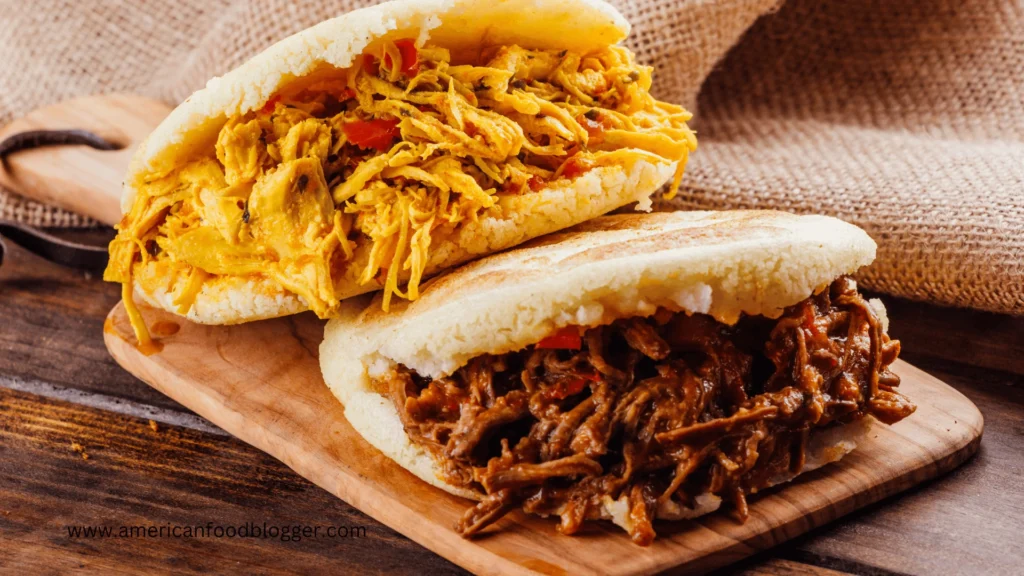
4. Arepas
Arepas are versatile cornmeal cakes that can be grilled, baked or fried. They’re enjoyed in various forms—stuffed with cheese, meats, beans or even vegetables. Arepas are a staple in daily meals and often served for breakfast, lunch, or dinner.
Watch: How to make Arepas
Why Popular?
1. Versatility: Arepas are incredibly versatile and can be enjoyed at any time of the day. They can be grilled, baked or fried and filled with a wide range of ingredients, from cheese and meats to vegetables and avocados. This adaptability makes them a staple in many South American households.
2. Cultural Significance: Arepas hold significant cultural importance in countries like Venezuela and Colombia. They are a traditional dish with deep roots in indigenous culinary practices and each region has its own unique way of preparing and serving them.
3. Nutritional Value: Arepas provide a good source of carbohydrates and can be made healthier with whole grain or enriched cornmeal. Depending on the fillings, they can also offer proteins and essential vitamins, making them a balanced option for many.
4. Street Food Favorite: Arepas are a popular choice among street food vendors throughout South America. Their popularity in this context highlights their accessibility and appeal to a wide audience.
5. International Recognition: As South American cuisine gains global recognition, Arepas have become a symbol of the continent’s culinary diversity. They are increasingly featured in international food festivals and restaurants, showcasing the best of South American flavors.
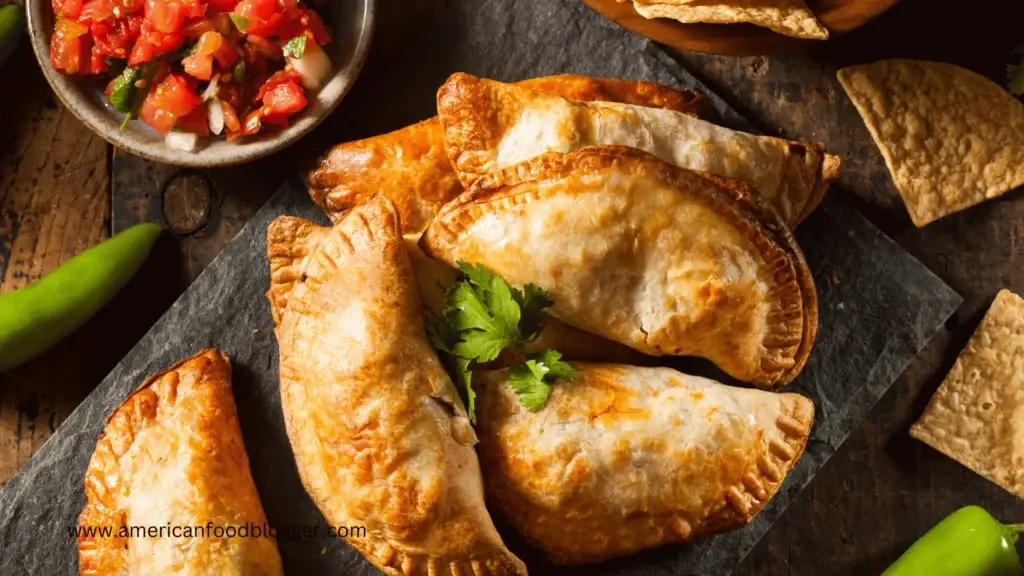
5. Empanadas
Empanadas are savory pastries popular in Latin America and Spain, with each region offering its own twist on the filling and cooking method. They are typically filled with seasoned meats, cheese, vegetables or even sweet fillings.
In Argentina, empanadas are often filled with spiced beef, onions and sometimes hard-boiled eggs. In Venezuela and Colombia, they are made with a crispy cornmeal crust. Whether baked or fried, empanadas are enjoyed as snacks, appetizers, or meals.
Watch: How to make Empanadas
Why Popular?
1. Cultural Versatility: Empanadas are loved across South America for their ability to be filled with meats, cheeses, vegetables and even fruits, making them adaptable to local tastes.
2. Historical Roots: While Empanadas originated in Spain, they became popular in South America through colonial influence and evolving to reflect local culinary traditions.
3. Convenience: Easy to eat on the go, empanadas are a popular street food and quick meal, perfect for a snack or a full meal.
4. Flavorful and Satisfying: The flaky crust and flavorful filling make empanadas a delicious, satisfying dish that offers a great contrast in textures and flavors.
5. Affordable and Accessible: Empanadas are inexpensive to make and buy, making them a popular and accessible food for many people across South America.
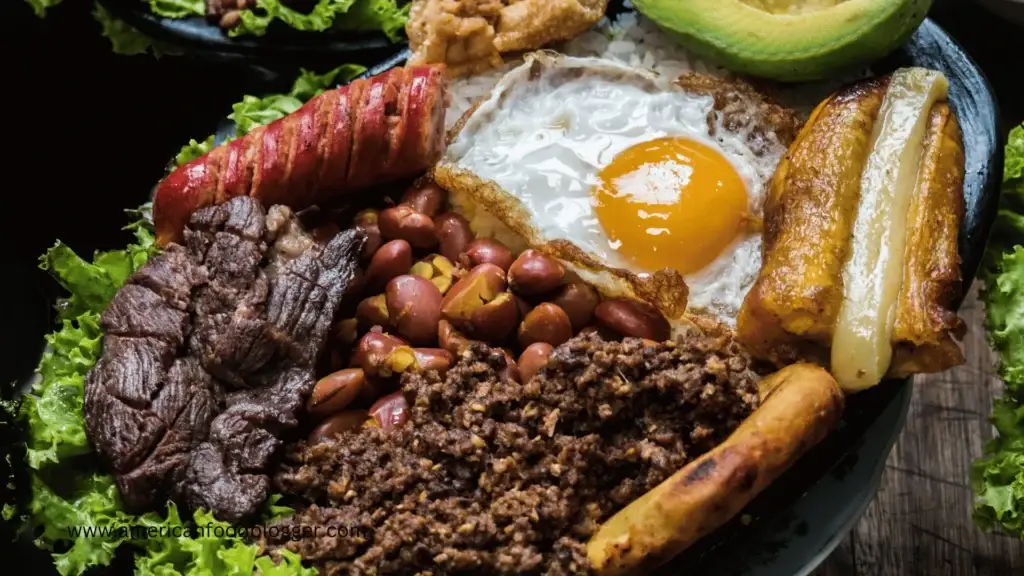
6. Bandeja Paisa
Bandeja Paisa is a famous Colombian dish from the Antioquia region. This hearty platter combines a variety of textures and flavors, typically including rice, beans, ground beef or steak, chicharrón (crispy pork belly), fried egg, avocado, plantains and sometimes an arepa.
Watch: How to make Bandeja Paisa
Why Popular?
1. Cultural Significance: Bandeja Paisa is a key Colombian dish that represents the culinary traditions of the Antioquia region. Its name reflects both the dish and the people of the area.
2. Symbol of Regional Pride: The dish highlights the diverse ingredients of the region like pork, beans and plantains. It’s popular beyond Colombia, representing South American food culture.
3. Nutritional Richness: Bandeja Paisa is a hearty meal with proteins, carbs and fats, offering a balanced mix of flavors and textures.
4. Tourist Attraction: Often recommended to tourists, Bandeja Paisa offers an authentic taste of Colombian cuisine and is a must-try for anyone exploring South America.
5. Iconic Representation: As one of South America’s most beloved dishes, Bandeja Paisa is frequently featured in food guides and articles.
These points highlight why Bandeja Paisa is celebrated as one of the most popular and beloved foods in South America.
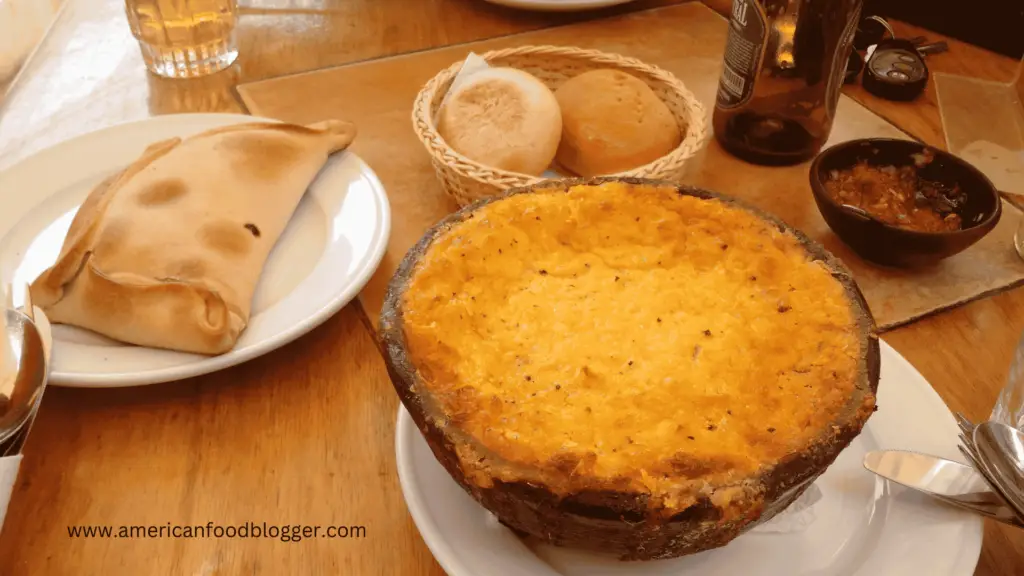
7. Pastel de Choclo
Pastel de Choclo is a comforting Chilean pie with a sweet corn topping over a filling of ground meat, onions, olives and sometimes eggs. Blending indigenous and Spanish influences, it reflects Chile’s culinary history. The creamy corn contrasts with the savory filling, making it a favorite for family dinners and celebrations.
Watch: How to make Pastel de Choclo
Why Popular?
1. Corn-Based Delight: Pastel de Choclo is a savory pie made with a fresh corn topping, offering a sweet and creamy texture that pairs beautifully with its rich, meaty filling.
2. Cultural Significance: It’s a staple in Chilean cuisine and reflects South America’s deep agricultural roots, with corn being a key ingredient in many traditional dishes.
3. Unique Flavor Profile: The dish typically includes a layer of seasoned ground beef, chicken, onions, hard-boiled eggs, and olives, creating a delightful contrast with the slightly sweet corn topping.
4. Comfort Food: Pastel de Choclo is often enjoyed as a comforting, home-cooked meal and is popular during family gatherings and celebrations, especially in rural areas of Chile.
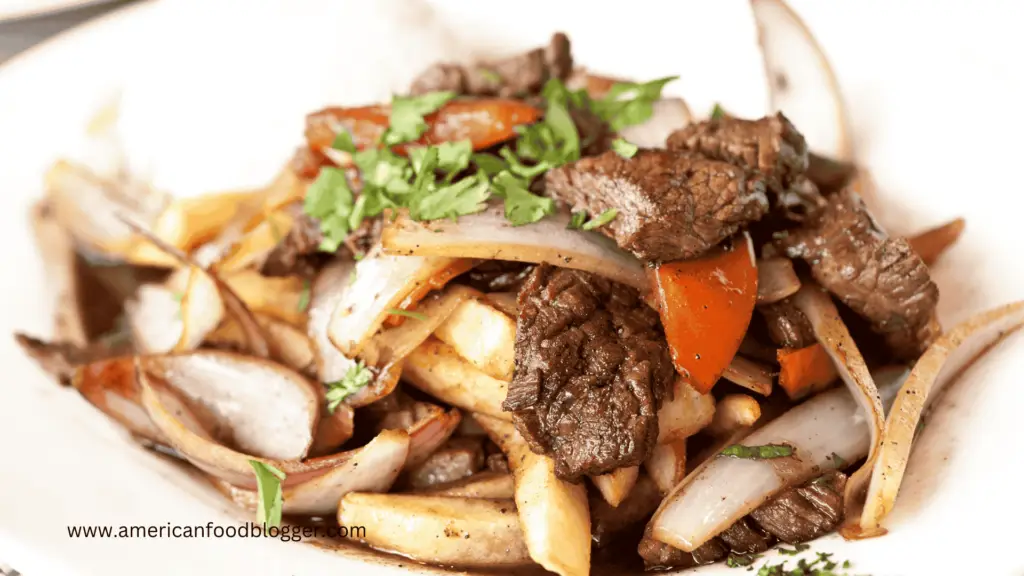
8. Lomo Saltado
Lomo Saltado’s blend of cultural influences and bold flavors represents the richness of South American cuisine. This dish combines marinated beef strips with vegetables like tomatoes, onions and bell peppers, all tossed in soy sauce and vinegar for a tangy, savory taste. Crispy fries are mixed in and served over rice, making it a hearty and satisfying meal.
Watch: How to make Lomo Saltado
Why Popular?
1. Fusion of Cultures: Lomo Saltado is a unique fusion of Peruvian flavors and Chinese stir-fry techniques, inspired by Chinese immigrants in Peru. It combines traditional South American ingredients with a delicious twist.
2. Versatility: Lomo Saltado is typically served with a side of rice and French fries, making it a satisfying and well-rounded meal that appeals to a wide range of tastes.
3. Easy Accessibility: It’s commonly found in both high-end restaurants and casual eateries throughout South America, making it a dish that’s accessible to everyone.
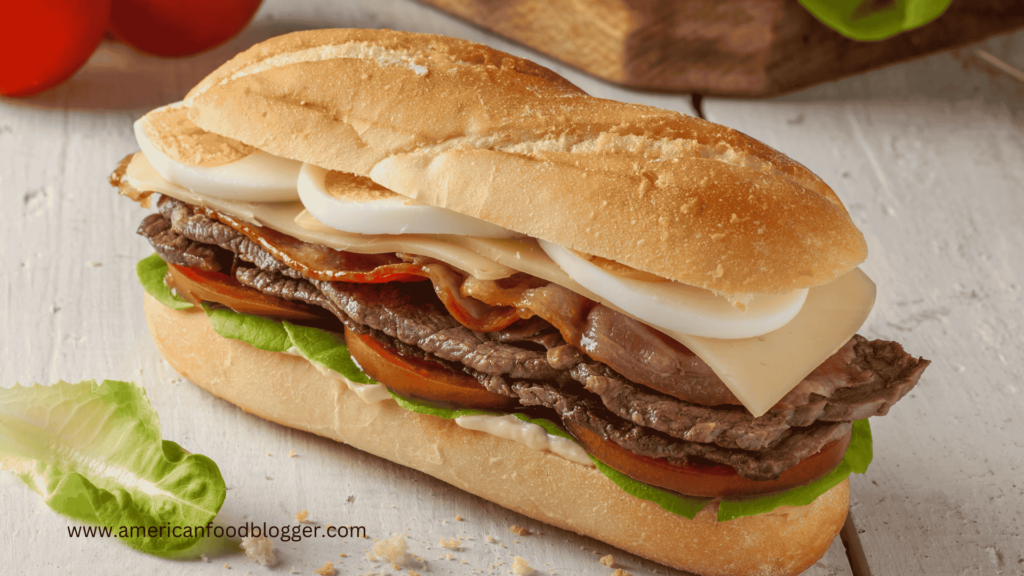
9. Chivito
Chivito is Uruguay’s ultimate sandwich, made with tender beef steak, ham, melted cheese, lettuce, tomato and a fried egg in a soft bun. Often served with a side of fries, it’s a perfect example of how simple ingredients create a bold, flavorful dish loved by both locals and visitors alike.
Watch: How to make Chivito
Why Popular?
1. Uruguay’s National Sandwich: The Chivito is a famous sandwich in Uruguay, loved for its tasty combination of ingredients. It’s also popular in other South American countries.
2. Hearty and Filling: A chivito typically includes grilled steak, ham, cheese, lettuce, tomato and mayonnaise. It can also have fried eggs, bacon and olives, making it a big and satisfying meal.
3. Versatile: The traditional chivito is made with beef but there are many versions with different meats or vegetarian options to suit various tastes.
4. Popular Street Food: Chivitos are easy to find at food stalls, restaurants and diners, making them a convenient and popular choice for a quick meal.

10. Salteñas
Salteñas are a popular Bolivian snack, similar to empanadas but with sweet dough and a juicy, spiced filling. The filling usually includes beef or chicken, vegetables and sometimes a touch of sweetness. The saucy filling can be messy but they’re delicious. Salteñas are often enjoyed as a mid-morning snack or light meal, usually served with spicy salsa.
Watch: How to make Salteñas
Why Popular?
1. Unique Filling: Salteñas are filled with juicy, flavorful meats (like beef or chicken), potatoes, peas, olives and sometimes raisins. The filling is spiced with cumin and a touch of sweetness, giving it a unique taste.
2. Cultural Staple: In Bolivia, salteñas are a cultural icon, enjoyed daily by locals, often as a mid-morning snack. They are an essential part of Bolivian food traditions.
3. Beloved in Neighboring Countries: Salteñas started in Bolivia but are now popular in other South American countries like Argentina and Peru, making them one of the region’s most loved foods.
4. Rich History: Salteñas originated in the 19th century, mixing indigenous and Spanish influences, reflecting the region’s culinary diversity.
These iconic dishes are just a taste of South America’s culinary richness, blending indigenous traditions, European influences and regional creativity. Each bite tells a story of the land’s history and its people’s spirit.
Conclusion
South America is a treasure trove of incredible flavors, ingredients, and dishes that reflect its rich history and diverse cultures. From Brazil’s hearty feijoada to Argentina’s smoky asado and Bolivia’s juicy salteñas, every dish has its own story of tradition and pride.
Whether it’s street food like arepas or fresh seafood like ceviche, the continent offers something delicious for every palate. Trying South America’s popular foods isn’t just about tasting great meals—it’s a way to connect with the region’s unique and unforgettable heritage.
💡Related Queries:
1. What are the Best American Foods?
3. What Snacks Girls do Love the Most in US?
4. What American Foods Are Banned in Europe?
5. Why Is American Food So Unhealthy?
Frequently Asked Questions:
➤ What are the staple foods in South American cuisine?
Answer: South American cuisine is rich and varied, with staple foods like corn, potatoes, rice and beans. These ingredients are commonly used in many dishes across the continent, especially in countries like Peru, Brazil and Argentina.
➤ What is the national dish of Peru?
Answer: The national dish of Peru is Ceviche, which features fresh raw fish marinated in tangy lime juice and spiced with chili peppers. It’s often served with sides like sweet potatoes or corn, offering a perfect balance of flavors.
➤ What are some popular Argentinian foods?
Answer: Argentina is famous for its Asado (barbecue), which features a variety of grilled meats, particularly beef. Other popular dishes include Empanadas (stuffed pastries) and Milanesa (breaded and fried meat cutlets).
➤ What traditional food is Brazil known for?
Answer: One of Brazil’s most iconic dishes is Feijoada (a rich black bean stew with pork). Another popular dish is Pão de Queijo (a small cheese bread roll that’s soft and cheesy).
➤ What are some famous desserts in South America?
Answer: Popular South American desserts include Dulce de Leche (a sweet caramel-like spread), Alfajores (shortbread cookies filled with dulce de leche) and Tres Leches Cake (a sponge cake soaked in three types of milk).
➤ Are there any vegetarian-friendly dishes in South America?
Answer: Yes, South America has many vegetarian-friendly options, including Arepas (cornmeal cakes from Venezuela and Colombia), Humitas (steamed corn cakes from the Andean regions) and various rice and bean dishes like Gallo Pinto.
➤ What is the most popular drink in South America?
Answer: Matéis one of the most popular drinks, especially in Argentina, Uruguay and Paraguay. It’s a herbal tea made from the dried leaves of the yerba maté plant. In Brazil, the national drink is Caipirinha, a cocktail made with cachaça, lime and sugar.
➤ What street foods are common in South America?
Answer: Common street foods include Arepas (Venezuela), Choripán (grilled chorizo sandwich in Argentina) and Acarajé (deep-fried balls of black-eyed pea dough in Brazil).
➤ What are some popular South American seafood dishes?
Answer: With its extensive coastline, South America boasts seafood as a key part of its cuisine. Aside from Ceviche in Peru, other popular seafood dishes include Moqueca (a Brazilian fish stew) and Parihuela (a Peruvian seafood soup).
➤ What influences South American food?
Answer: South American food is a vibrant fusion of Indigenous, European (especially Spanish and Portuguese) and African influences, creating a rich and diverse culinary landscape across different regions.

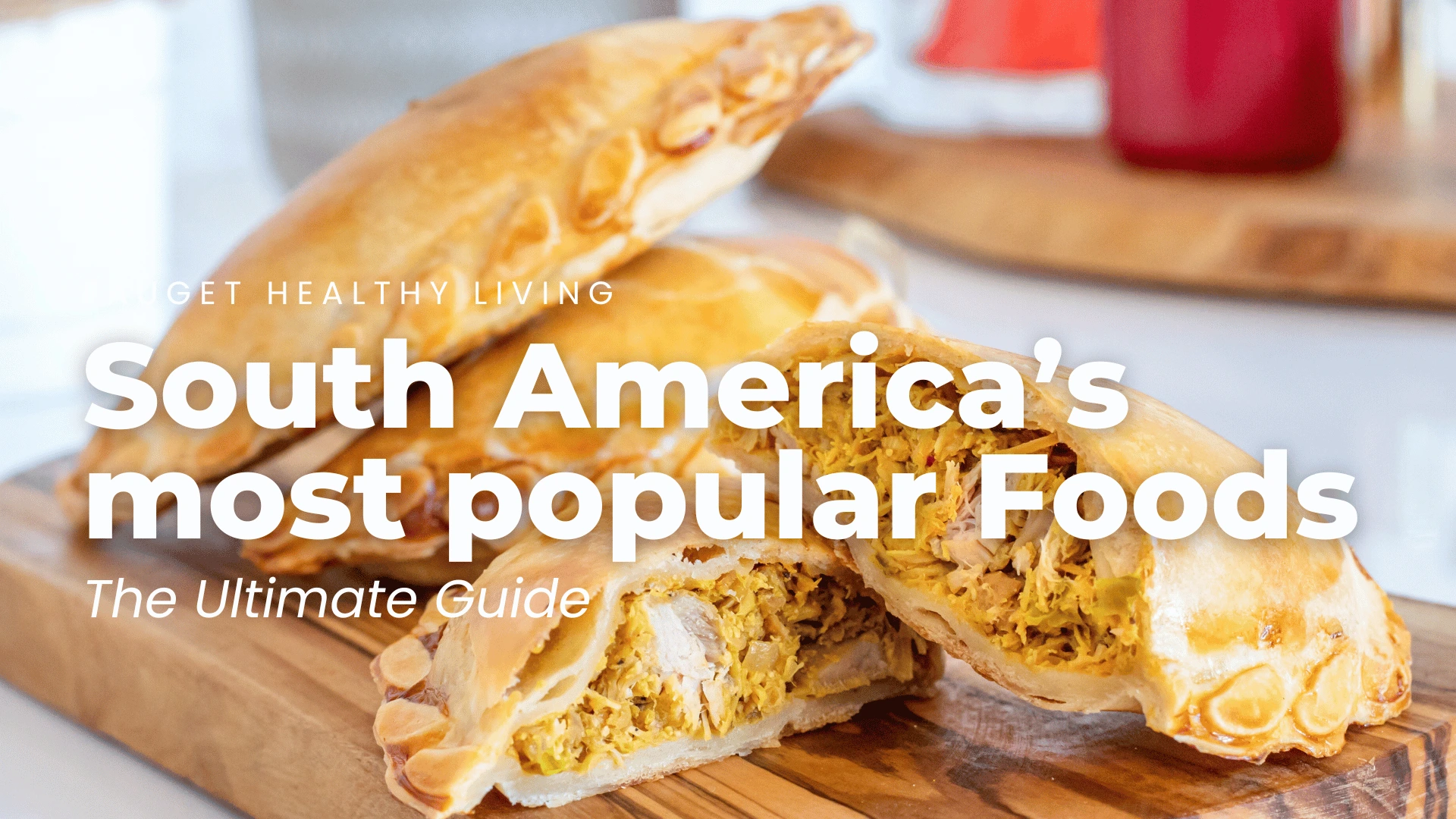





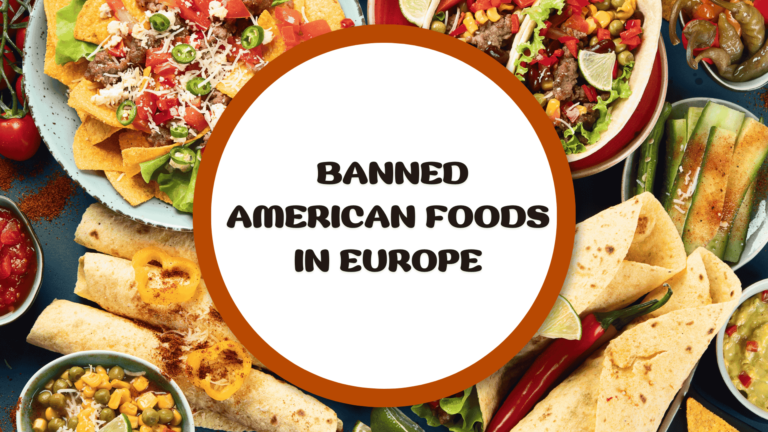
2 Comments